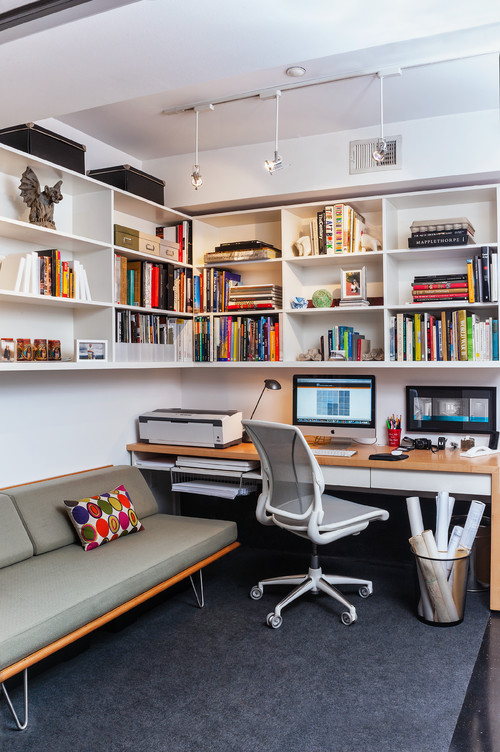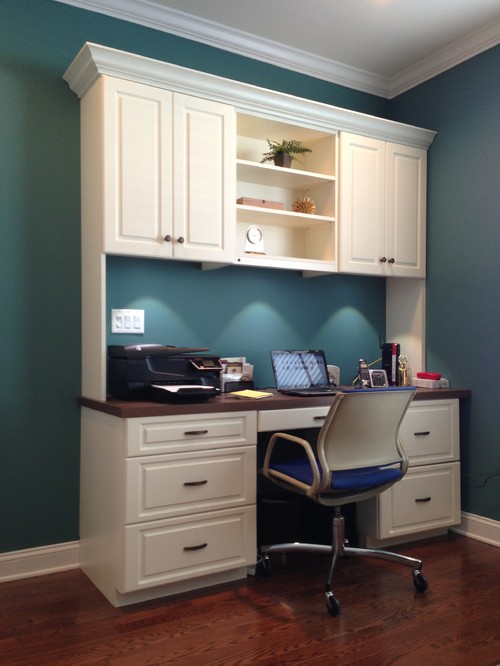Assuming that, being a remote worker, you spend a regular amount of your working week at home, you will need a fully functioning home office. This post examines what you need to cover and why. Note, it’s worth the investment in a proper home office if it’s something you’ll be using regularly; it will help maintain your productivity when working remotely and also help keep a healthy work life balance.
So, first, let’s look at what your home office needs to let you work remotely.
Consider What You Need To Cover:
- Connectivity
- Avoiding Overspill
- Make It A Dedicated Work Space
1. Connectivity
Ensure that your home office is fully connected to the central office and all your systems can work at optimum efficiency. This means you need to make sure your mobile and Wi-Fi signals are at full strength when sat at your desk.
If you haven’t already, it is likely to be worth upgrading to fibre broadband and then, depending on the age and layout of your house, either change the location of your wireless router or install a hardwire cable.
There are also plenty of other wireless signal boosting devices which can be plugged into your mains connection.
2. Avoiding Overspill
Don’t let the office layout overspill into surrounding areas of your home. After all, it is your house more than it is your office. Other people will likely need to use your home during and outside of your working hours.
It would detract from the homely feeling of the space if your office dominated in terms of floorspace used, noise levels and even visually.
Check the inspirational posts below to see some creative ways of keeping your home office compact and under control.
3. Make It A Dedicated Work Space
At the same time, it’s advisable to not let your home life overspill into your home office. The majority of remote workers will tell you that it’s better to be able to enter a “work environment” when sitting in your home office.
If you are a remote worker, you aren’t just “working from home” for the day; the place where you work is your office. It needs to be a dedicated, professional space.
The added benefit of this is that, once your work day finishes, you can leave the office behind just like a regular office worker.
These little touches go a long way to making a more productive and healthy attitude to your work life.
Get Inspired:
Here’s a small collection of inspiring home office setups that you can use to help work remotely from the central office.
Make Spare Rooms Multi Purpose –
| If you don’t regularly have guests who stay over but do have a spare bedroom or reception room, it’s a good idea to use this as your home office location.
The example on the right shows how a sofa bed can be used, as opposed to a regular bed, to make sure the room is clearly a working space – but it can, of course, be converted back to a sleeping space when a guest does arrive. There’s also a lot to learn from the raised level storage and sliding drawers on the office desk. This keeps work documents and resources well organised and tidy. |

Photo by Patrick Brian Jones PLLC on Houzz |
Create A Dedicated Space Inside A Larger Room –
|
Photo by Closettec on Houzz
|
An intelligent use of office furniture within the home can allow you to create a working area in a larger room. This is a likely option for those who aren’t fortunate enough to have a spare bedroom that they can convert.
Inside a dining room, living room or hallway is a good place install a bureau or stylish office desk and chair. But, remember, this work station is inside the regular space of the home, so needs to be easily tidied away once work finishes. Good storage is key to this. Look at how this Houzz user has utilised domestic looking cupboard doors to keep work items well out of site when not in use. It’s also the type of desk which the kids could play on the computer or do homework at too – which helps improve the value. |
Make Use Of Dead Space –
| New build houses might need a stud wall or downstairs toilet removing, and period properties are likely to have plenty of similarly sized recesses*, but installing a home office under the stairs is a great idea.
The area is typically only used for storage or for perhaps a rarely used downstairs toilet. It would be a much more effective use of space to install your home office there instead. Even if the living room is open plan, the fact that it’s behind you is great for helping to keep you focused and on task. *In older properties, scope out other potential recesses like next to chimney breasts, bay windows or underused built in wardrobes. |
Convert Your Attic –
|
|
Although likely to be a costly option compared to some of the other suggestions, it’s worth considering converting your attic space if you’re a long-term remote office worker.
This will maximise the benefit of creating a dedicated workspace which is separate to your home life as it is literally on another floor and boxed off, away from the rest of the home. Another secondary benefit is that it will improve the heating efficiency of your home (because you’ll only be heating that smaller space when working at home alone and will improve the insulation of the rest of the house at the same time) and it can add a lot of re-sale value to your property. |
Convert A Bedroom –
| If you have a free bedroom and no need for it to be available for guests, you could make it into a dedicated home office.
As pictured, right, this could be done by converting a small box room or nursery into a well designed single office. Alternatively, and a little more work, you could partition part of a larger room or even a garage into a working space. Make sure to build in lots of storage. If the floorspace is limited, it’s best to keep documents and resources organised and out of site. This will stop your office becoming cluttered and unwelcoming. |
Go All Out –
|
Photo by Haleh Design Inc. on Houzz
|
If you’re planning on being a remote office worker for the rest of your career, you might as well make a home office to be proud of. Whilst the example on the left might be a little grandiose for most budgets and tastes, the scale of it is something worth considering. The executive chair, floor to near-ceiling storage, the plentiful natural light and plant life, combined with the amount of space in the room, mean that this is a home office which promotes productivity. It can also be closed off and shut down come the end of the working day, left out of sight until you return to work. |
Start Small – Get The Right Chair
Whilst you might dream of one day having an office setup like the last one pictured above, the reality for many of us is something more run of the mill. But just because your office is inside the home doesn’t mean you should compromise on design style.
The last thing you want is a chair which looks like it has been wheeled out of a commercial office sitting inside your domestic setting. At the same time, if you’re going to be spending any length of time working in your home office, you don’t want a chair which compromises your health. Choose the right spec chair for your use and location.





